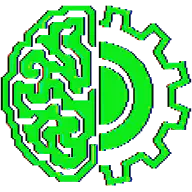Architecting your Matrix..
SaaS: 0x5#
Overview#
This video discusses expanding the concept of “personal computing” beyond traditional hardware devices to encompass a broader ecosystem, data sovereignty, automation, and ultimately seeing the world and one’s own cognitive processes through the lens of symbolic computation and transformations. It encourages a shift from passive user to an active architect of one’s digital environment and mind.
Expanding Personal Computing: Beyond Devices#
- [00:00:48] The idea of personal computing goes beyond just devices like laptops and phones to encompass an entire ecosystem, including wearable tech, the cloud (data centers), and interconnected systems.
- [00:02:15] Modern personal computing, from an engineering perspective, emphasizes knowing your infrastructure, using open source tools, self-hosting services, and achieving personal data sovereignty – being in control of your data whereabouts and usage.
- [00:03:00] Self-hosting and managing your own infrastructure (home labs, VPS) is a move towards being an evolved user, rather than just a convenient one.
Building Your Own Systems and Automation#
- [00:03:31] The next stage involves building your own compute, “knowledge systems,” and pipelines. This includes automation tooling, writing custom scripts (e.g., Python), and using connectors (like Zapier) to integrate different services and tools.
- [00:04:47] The goal is to create an unstructured way of dealing with your own mind to give it structure, extending capabilities beyond physical tools and inherent cognitive limits.
Cognitive Infrastructure and Indexing#
- [00:05:10] A common approach to extending cognitive capabilities is using a “second brain” or digital zettelkasten, organizing notes and ideas. Different mindsets (gardener, surgeon, bonsai) can be applied to managing this system.
- [00:06:00] Deeper engineering perspective involves generic thinking about compute, networking, storage, and interfaces, leading to efficiency improvements (touch typing, speed reading) and alternative interaction methods (voice control, eye tracking).
- [00:07:48] A key psychological shift is building a “scaffolding” of compute, networking, and storage around your thoughts and mind.
- [00:08:15] A personal project example: Indexing chaotic creative content (logs, journals, videos) to make it searchable and useful. Linear search is difficult for large amounts of personal data.
- [00:09:00] The idea of a personal data lake allows for indexing, similar to how photos can be indexed by captions.
- [00:10:09] Text is highlighted as a unifying theme across different data types (voice, video, images can be converted to text) due to its symbolic nature and efficiency in conveying information quickly through shared context. Symbols are considered primal and natural to thought.
Personal Computing as Engineering Your Mind#
- [00:15:54] Personal computing, in this advanced sense, is about engineering cognitive infrastructure to better understand and extend your own mind, rather than just performing external tasks or storing knowledge.
- [00:16:27] Indexing is a vital start for interacting with personal information quickly.
- [00:16:53] Building this infrastructure yourself (self-hosting) allows understanding what’s happening underneath (e.g., building a RAG store or vector index for your thoughts).
- [00:17:31] Modeling your own mind in terms of data sources, sinks, and behaviors to offload functions to a computer. An example is indexing personal video transcripts by creating metadata (tags, summaries) and storing it in a database.
- [00:18:56] Having such a personal data index helps in quick retrieval and understanding the evolution of your own thoughts over time, placing you beyond the limitations of relying solely on present memory.
The Final Stage: The World as a Computer#
- [00:20:12] The final stage is seeing everything as programs, not just physical devices. Inputs, processors, outputs, and feedback loops are everywhere, even subtle transformations like sunlight and felt warmth.
- [00:21:18] This involves seeing the world through the lens of systems thinking, probabilistic computing, chaos theory, and physics.
- [00:21:50] The core idea is understanding the world as transformations or functions, similar to the Matrix concept.
- [00:22:15] To truly grasp this, one must delve into symbolic algebra, symbolic computing, or semiotics. Symbols, including transformations, are first-class citizens in this view, enabling powerful interpretations of the world and potentially recursive understanding (transforming transformations).
- [00:24:37] This view, influenced by fields like Lisp and symbolic computation, is a powerful framework for interpreting the world, moving from discrete devices to a comprehensive view of reality as a computational or symbolic system.
Conclusion#
[00:25:22] The video concludes by stating that personal computing, at its deepest level, is about applying abstract computational and symbolic domains to understand oneself and the world. This high-level understanding of technical concepts may become increasingly necessary for better human cognition and living.
